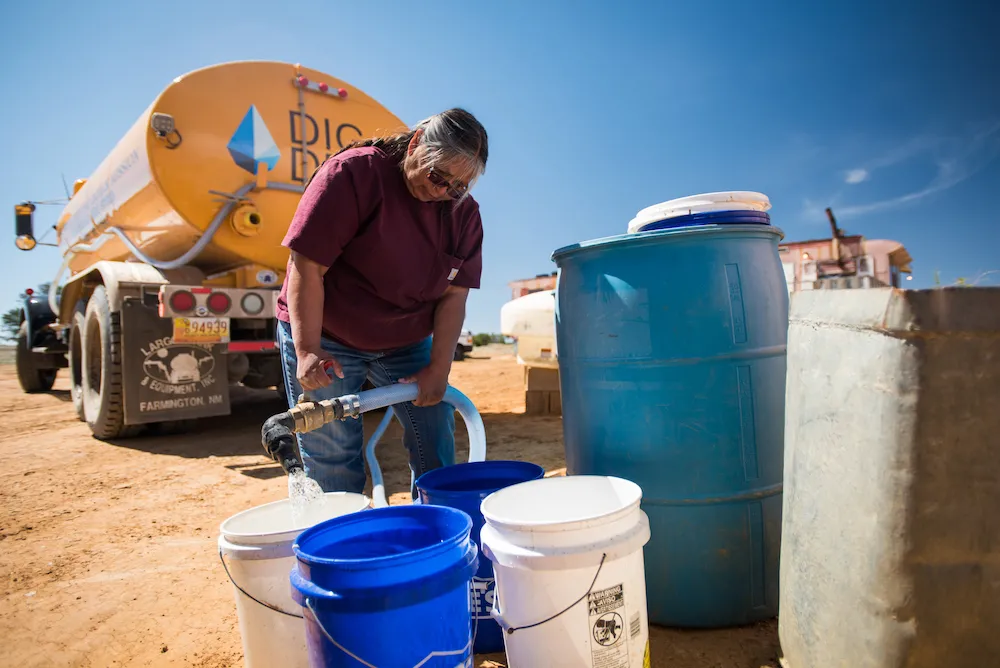Indigenous Communities Reshaping the Conversation Around Food Sovereignty
What exactly is food sovereignty? It’s the right to healthy and culturally appropriate food produced through ecologically sound and sustainable methods, and the right to define our own food and agricultural systems. It takes food justice to the next step and is more focused on long-term systematic changes to our current, harmful and unsustainable practices.
For the Indigenous peoples of North America, it also means a resurgence. A resurgence of self-determination, cultural revitalization, and social healing.
There’s no way to sugarcoat it. For over 500 years, the indigenous peoples of North America have faced countless crimes and atrocities, including the forceful removal from their ancestral lands by the federal governments of the United States, Canada, and Mexico. As Melissa Montalvo put it in her Civil Eats article, this continuous separation from their land is inextricably tied to the loss of traditional foodways, culture, and history.
For the past few decades, Native American tribes in the U.S. and Canada have been fighting for access to traditional foodways and regenerative agriculture. Without access to their ancestral land, many communities are struggling to make ends meet. Additionally, legislative policies, lack of funding, hazardous materials, and corporate ventures are constantly encroaching on their rights and resources.
In Idaho, there is an ongoing lawsuit where The Northwestern Band of the Shoshone Nation is suing Idaho Gov. Brad Little and state wildlife and game officials in federal court. The dispute stems from tribal citizens hunting “out of season” in unoccupied lands in the state, which is a right that was guaranteed in the 1968 Treaty of Fort Bridger. The State of Idaho argues that the northwestern bands of the Shoshone nation weren’t a part of the Fort Bridger Treaty.
“This is part of our cultural teaching -- our young ones know how to rice and they can feed themselves. If the rice is gone, what will we live on?” --- Elizabeth Skinaway of the Sandy Lake Band of Ojibwe.
In northern Minnesota, the Anishinaabe people are fighting a similar struggle against the construction of an oil pipeline that would threaten the health of the wetlands that provide their wild rice. The rice isn’t just food, it’s also an important part of a cultural ritual that involves singing, dancing, family celebration, and the traditional hand-processing of the rice. This rice is preserved and saved for ceremonies until the next harvest is ready. Canadian energy giant Enbridge began construction of Line 3 in December 2020 which will involve drilling under 22 river crossings in an otherwise untouched part of Minnesota’s northern lake region.
According to Elizabeth Skinaway, a Sandy Lake Band member, wild rice is incredibly delicate and any change in water quality or slightest leak in the pipeline will threaten her family’s long established means of business. Her family depends on the income that comes from selling rice products to afford basic essentials. Visit the Giniw Collective to learn more.
Meantime, the Navajo Nation covers over 27,000 square miles in Arizona, New Mexico, and Utah. As the climate changes and the water supply dries up, more and more Navajo citizens are left without a dependable source of water. Since the mid-1990s, record setting temperatures have caused all but one of the reservation’s rivers to stop running year-round. The vegetation in the region is severely stunted by this continuous drought, leaving ranchers with little usable natural range for their livestock. Even naturally occurring groundwater isn’t always safe, as there are 521 abandoned Cold War-era uranium mines in the reservation. About one-third of Navajo families don’t have access to running water and need to haul water, hay, food and other supplies home everyday. Not only is this a financial burden, but it also means that they are more likely to be exposed to COVID-19.
The pandemic has only exacerbated the inequities these communities face. That’s why, now more than ever, food sovereignty has come back into the spotlight. Statistics have shown that in Canada the rate of food insecurity among Indigenous households is over 28% while that of White families is 11%. Currently, a majority of Indigenous peoples depend on highly processed, low quality food provided by large corporations. In the case of the Navajo Nation, there are only 13 grocery stores on the reservation that spans across 3 states.
These food justice movements aren’t temporary, trendy fads that will one day vanish. For the Indigenous peoples of North America, it’s survival and a way to leave their children cultural and physical nutrition. By supporting these movements and becoming active partners in food sovereignty, we can help create interdependent relationships between different communities, people, and the land.
Learn more:
Giniw Collective [@giniwcollective] on Facebook
Indian Country Today - A nonprofit, multimedia news enterprise
Indigenous Food Systems: Concepts, Cases and Conversations by Priscilla Settee and Shailesh Shukla
Native Food Systems - First Nations Development Institute Website
Navajo Water project - DigDeep
References:
CBSN: Navajo Nation Residents Face Coronavirus Without Running Water
Civil Eats: Indigenous Food Sovereignty Movements Are Taking Back Ancestral Land
Civil Eats: Op-ed: COVID Took More Than Native Lives, It Also Took Our Foodways.
Elliott, H. L., Mulrennan, M. E., & Cuerrier, A. (2021). Resurgence, refusal, and reconciliation in a food movement organization: A case study of Food Secure Canada’s 2018
Assembly. Journal of Agriculture, Food Systems, and Community Development. Advance onlinepublication. https://doi.org/10.5304/jafscd.2021.103.009
Gigi from Gente Del Maíz [@gentedelmaiz] on Instagram
Indian Country Today: Tribe Sues Over Hunting Rights
KCET: Tending the Wild Documentary
Reuters: ‘We don’t give up really easy’: Navajo Ranchers Battle Climate Change
The Verge: The Navajo Nation Faced Water Shortages for Generations -- And then the Pandemic Hit




